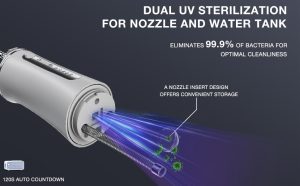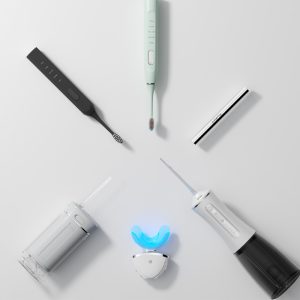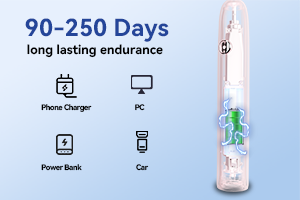Water flossers, also known as oral irrigators, have rapidly become an essential part of oral hygiene routines worldwide. Unlike traditional flossing, they use a stream of pulsating water to clean between teeth and along the gum line. This innovative method has proven to be more effective than traditional flossing for many users, especially those with braces or dental implants. However, the cleaning effect of a water flosser is influenced by several technical indicators. In this blog post, we will delve into the key factors that determine how well a water flosser cleans and how manufacturers can optimize these factors for maximum efficiency.
The Role of the Water Pump in Cleaning Performance
The water pump is at the heart of any water flosser. It is responsible for generating the pressure and flow of water that is essential for removing food particles, bacteria, and plaque from between teeth and along the gumline. A high-quality water pump ensures consistent pressure and minimizes the chances of water leakage, which can negatively affect the cleaning efficiency.
Manufacturers need to pay close attention to the pump’s power and its ability to maintain consistent performance over time. If the pump cannot generate sufficient pressure, the cleaning effect of the water flosser is reduced, resulting in a less effective cleaning experience.

Oral Irrigator Pulse Frequency: A Critical Factor for Deep Cleaning
Another key technical indicator that affects cleaning performance is the oral irrigator pulse frequency. Pulse frequency refers to the number of times the water stream pulses per minute. A higher pulse frequency creates a more dynamic, thorough cleaning experience by allowing water to reach deeper into the pockets between the teeth and gums.
The ideal pulse frequency varies from one user to another depending on their dental condition. However, higher pulse frequencies tend to perform better at dislodging plaque and debris from hard-to-reach areas. Manufacturers can optimize the pulse frequency to suit different cleaning needs, ensuring users can adjust it for gentle or more aggressive cleaning, depending on their oral health requirements.
Water Flow Accuracy: Ensuring Precision in Water Distribution
Water flow accuracy is another crucial aspect of water flossing performance. This refers to the precise control over the water’s flow rate and direction, ensuring that the water jet is accurately targeted to clean specific areas between teeth and along the gum line. A water flosser that lacks water flow accuracy may disperse water unevenly, leaving some areas less cleaned than others.
To ensure optimal cleaning, manufacturers should use advanced nozzles and technology that guarantee a steady and focused water stream. This level of precision is especially critical for users with sensitive gums or those who require deep cleaning around dental implants, crowns, or braces.
Pressure Settings and Customization for User Comfort
Pressure settings are also important when considering the effectiveness of a water flosser. Different users have varying sensitivity levels and preferences for cleaning intensity. Adjustable pressure settings allow users to customize their experience, balancing the need for effective cleaning with comfort.
Manufacturers should offer a range of pressure settings, including options for a gentle massage mode for sensitive gums and a higher pressure mode for more aggressive plaque removal. Ensuring these settings are easily accessible can help users achieve the most effective cleaning without causing discomfort.
The Importance of Nozzle Design and Placement
While the water pump and pulse frequency contribute significantly to cleaning power, nozzle design and placement are also essential. A well-designed nozzle can ensure flossing precisely, while an ergonomic design can enhance user comfort and ease of use.
Nozzles with multiple spray patterns, such as a focused jet stream or a wider spray, can offer flexibility for users with different oral hygiene needs. Moreover, the angle of the nozzle is crucial for reaching hard-to-reach areas, such as the back teeth or along the gum line.
Battery Life and Durability: Long-Term Cleaning Effectiveness
Finally, battery life and overall durability are key indicators that affect a water flosser’s long-term performance. If the battery runs out quickly or the unit begins to degrade over time, users may not experience the same level of cleaning effectiveness after prolonged use. Manufacturers should aim to create water flossers with reliable batteries that maintain their power over time, providing users with consistent and long-lasting performance.
Conclusion
The cleaning effect of the water flosser is determined by several interrelated technical indicators, including the water pump, oral irrigator pulse frequency, water flow accuracy, pressure settings, nozzle design, and battery life. By focusing on these key factors, manufacturers can enhance the overall user experience and improve the cleaning performance of their products. As consumers continue to seek more effective and efficient oral hygiene solutions, optimizing these technical indicators will be crucial for staying competitive in the market. https://www.powsmart.com/





